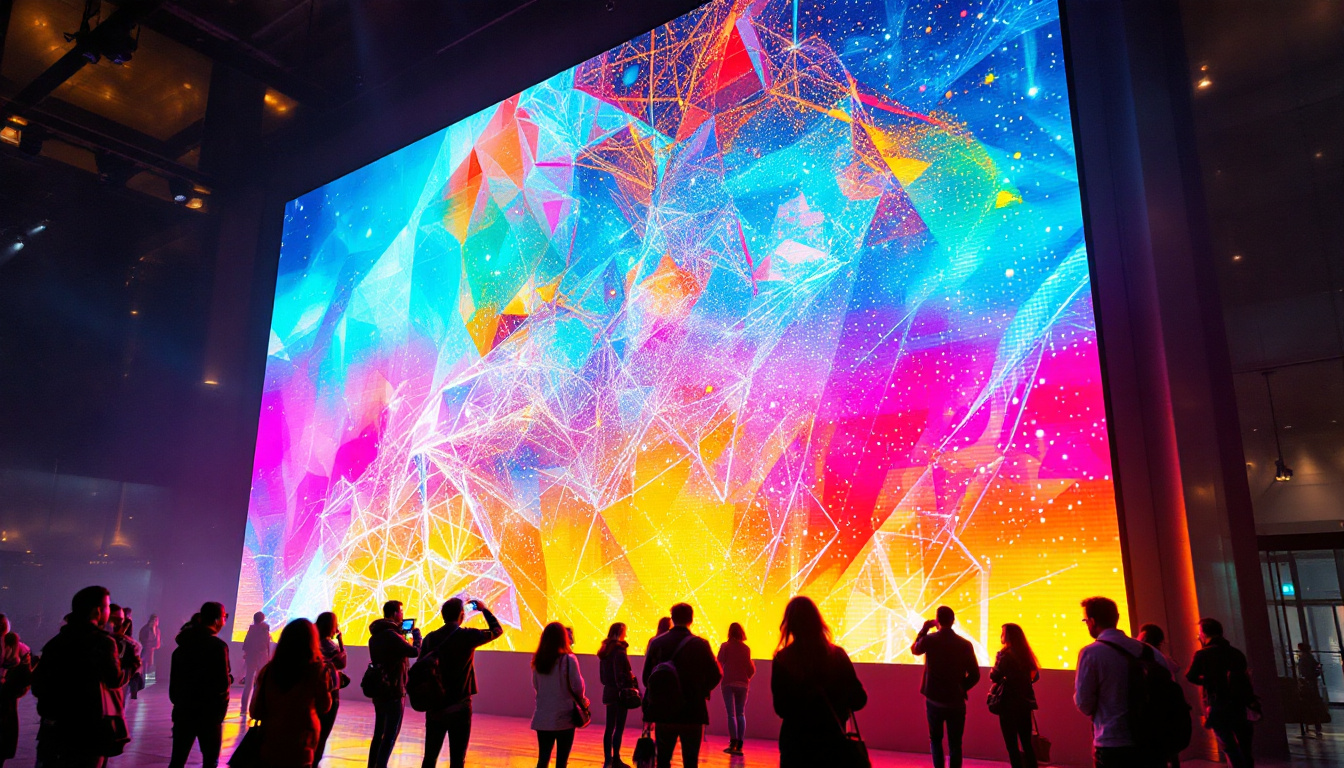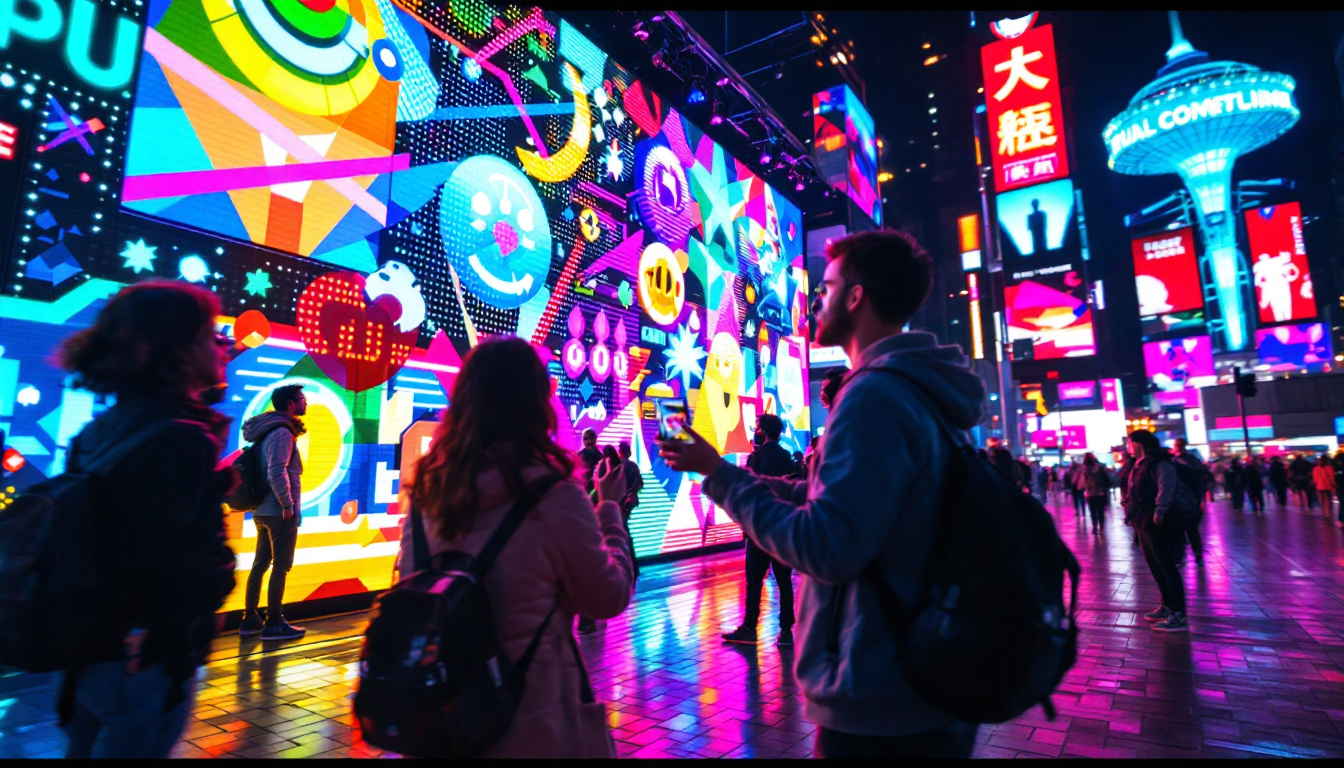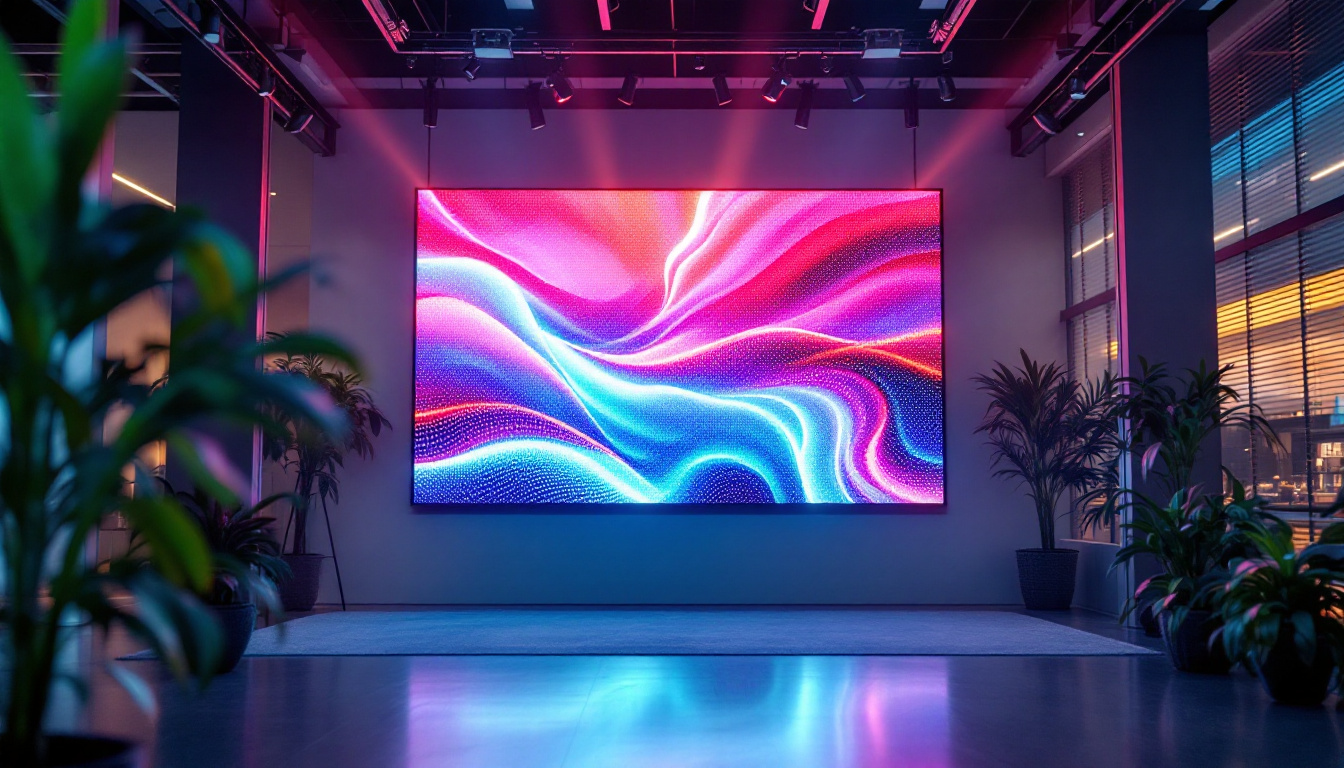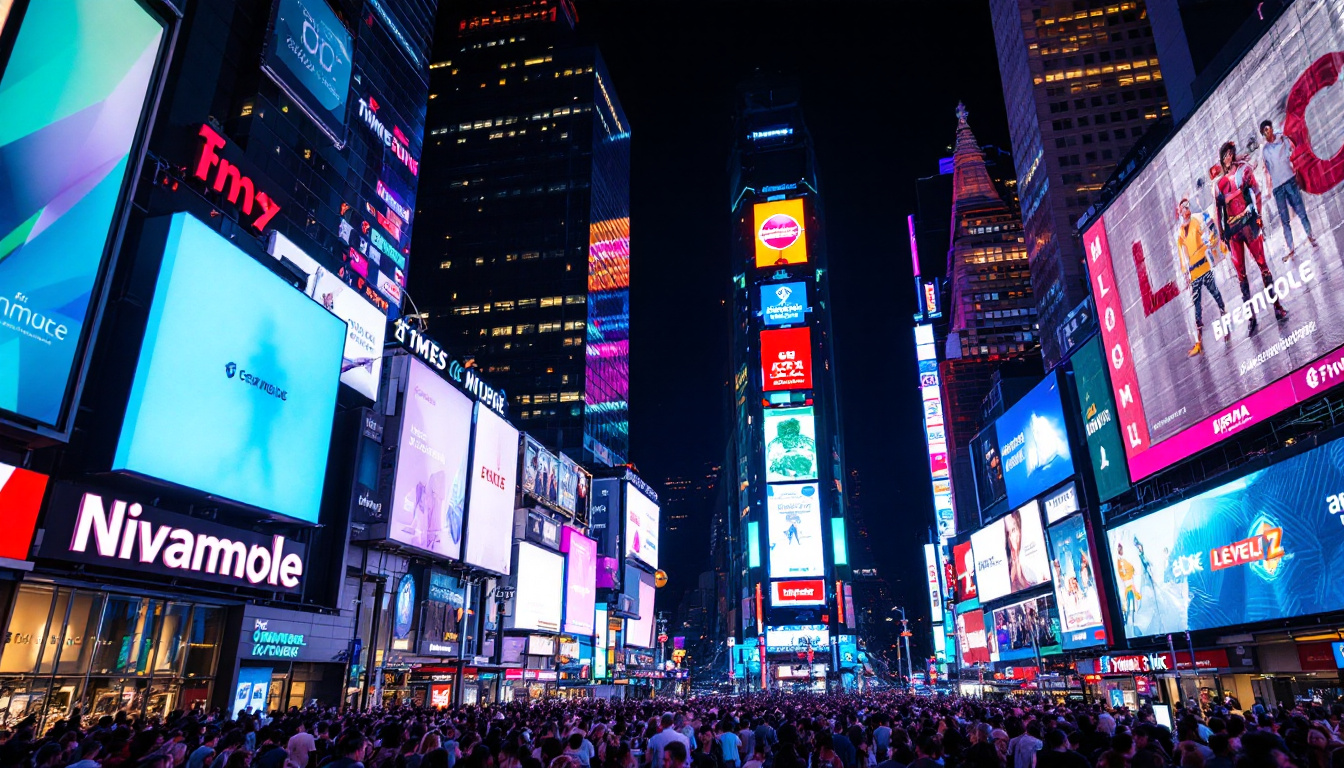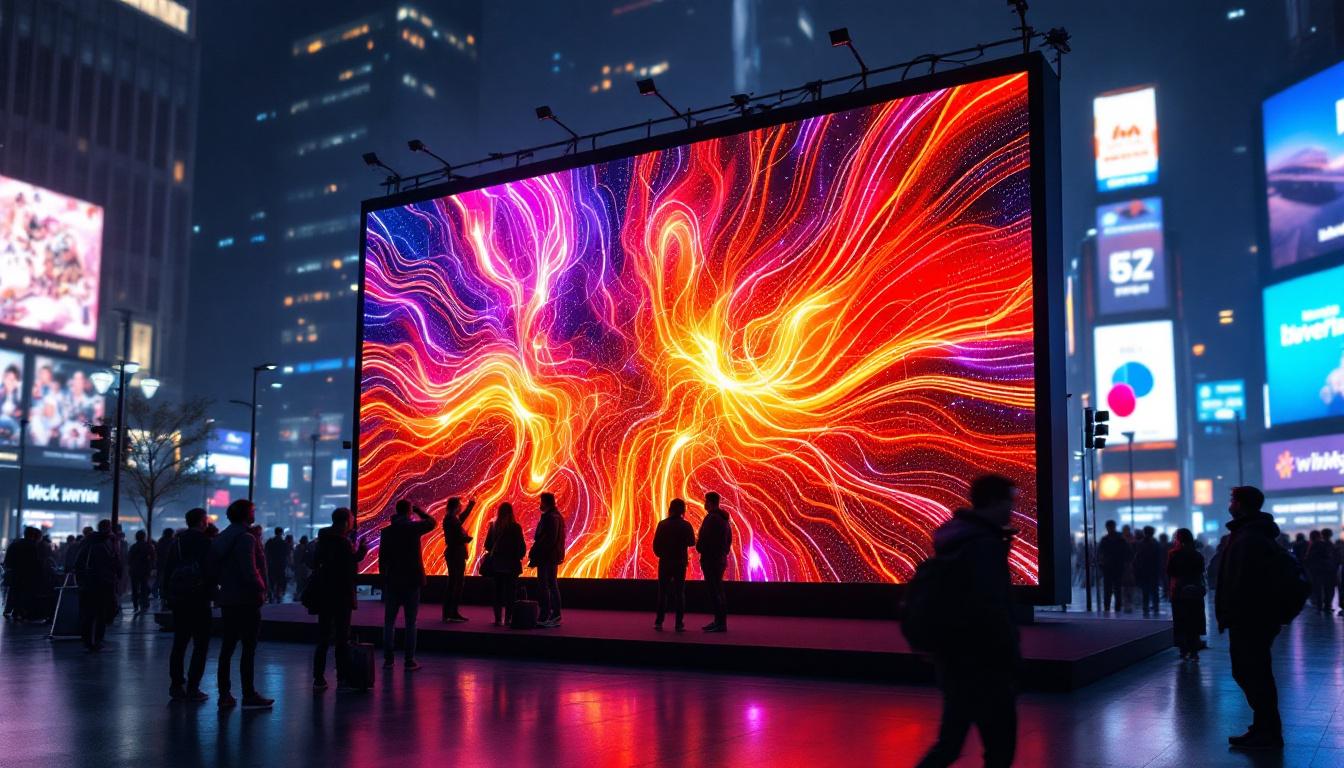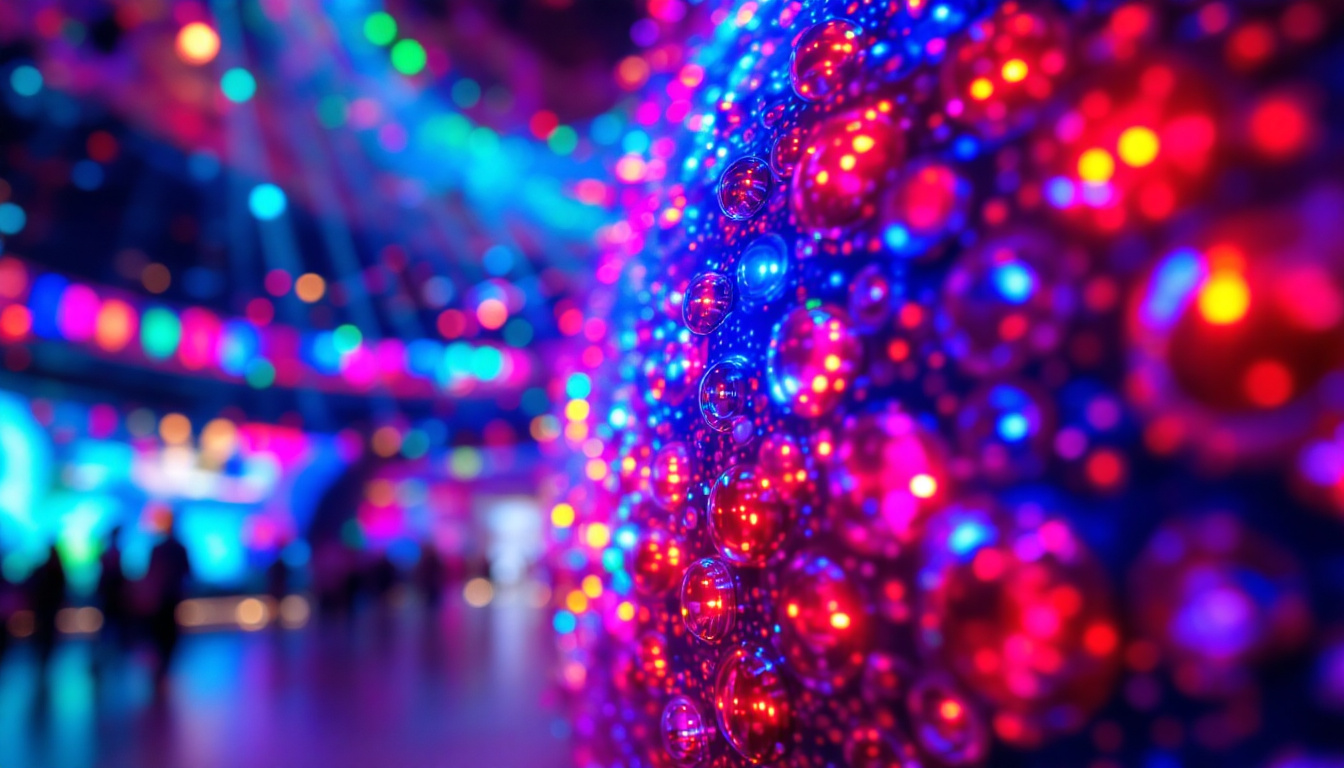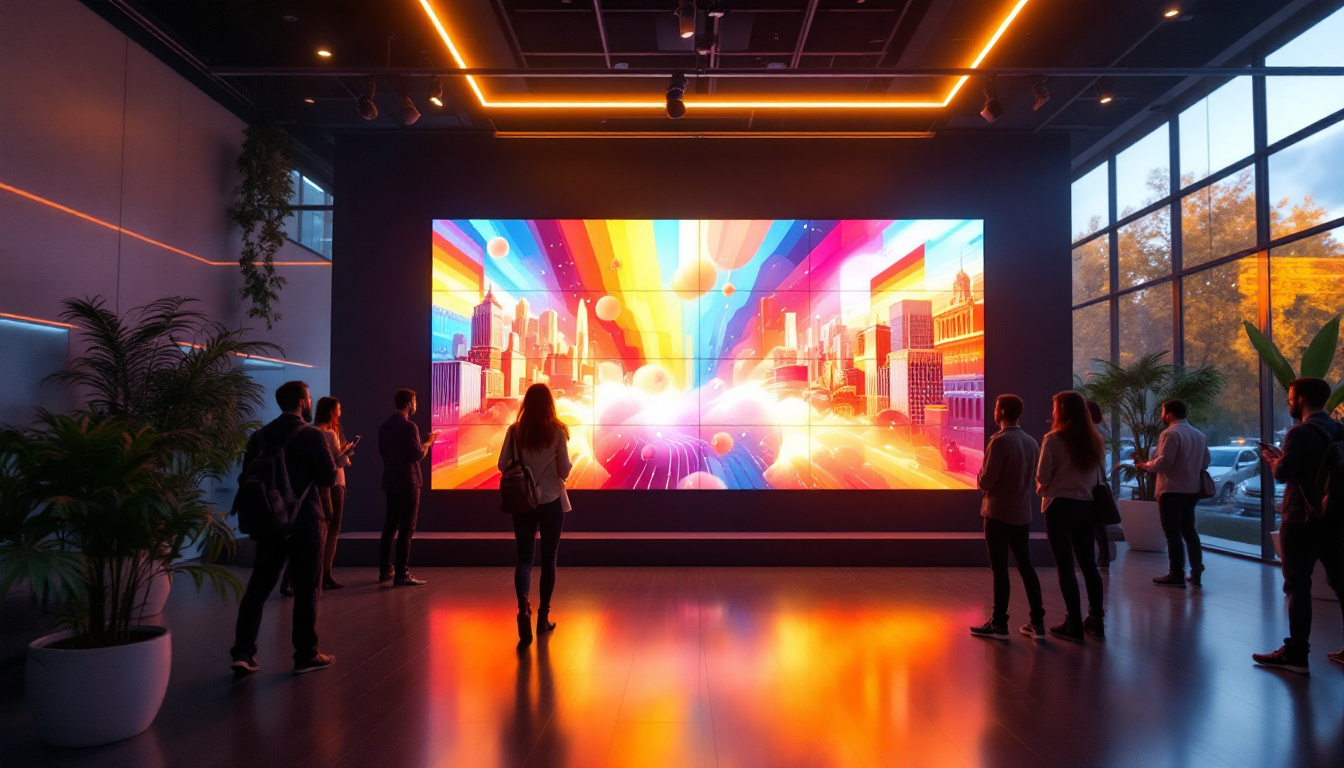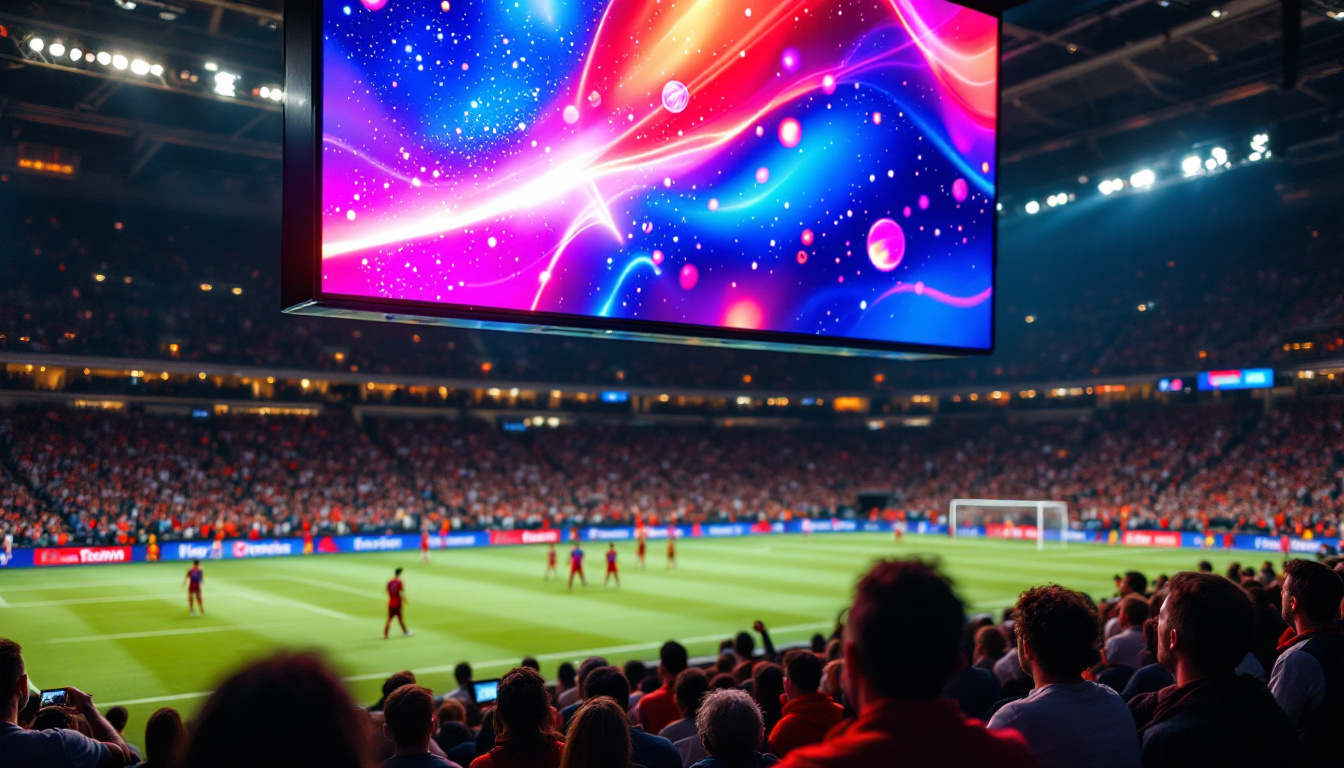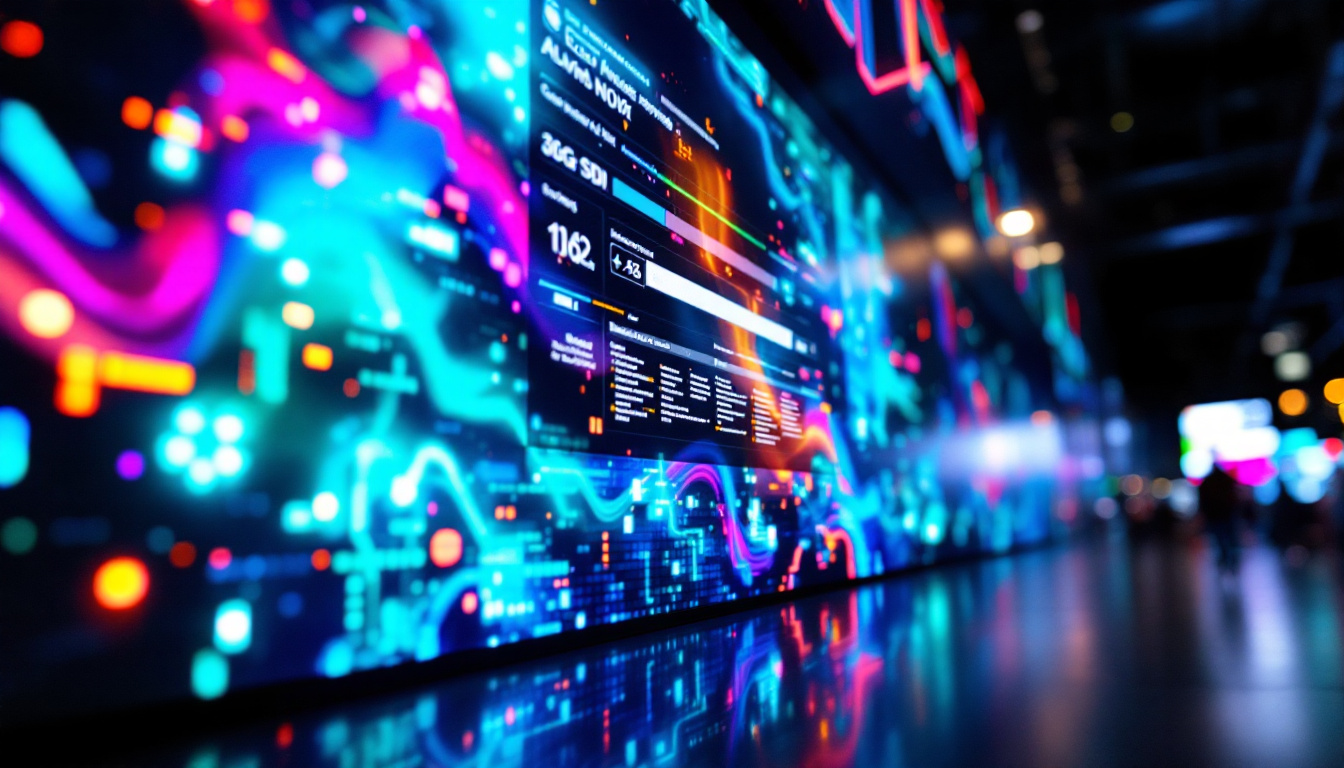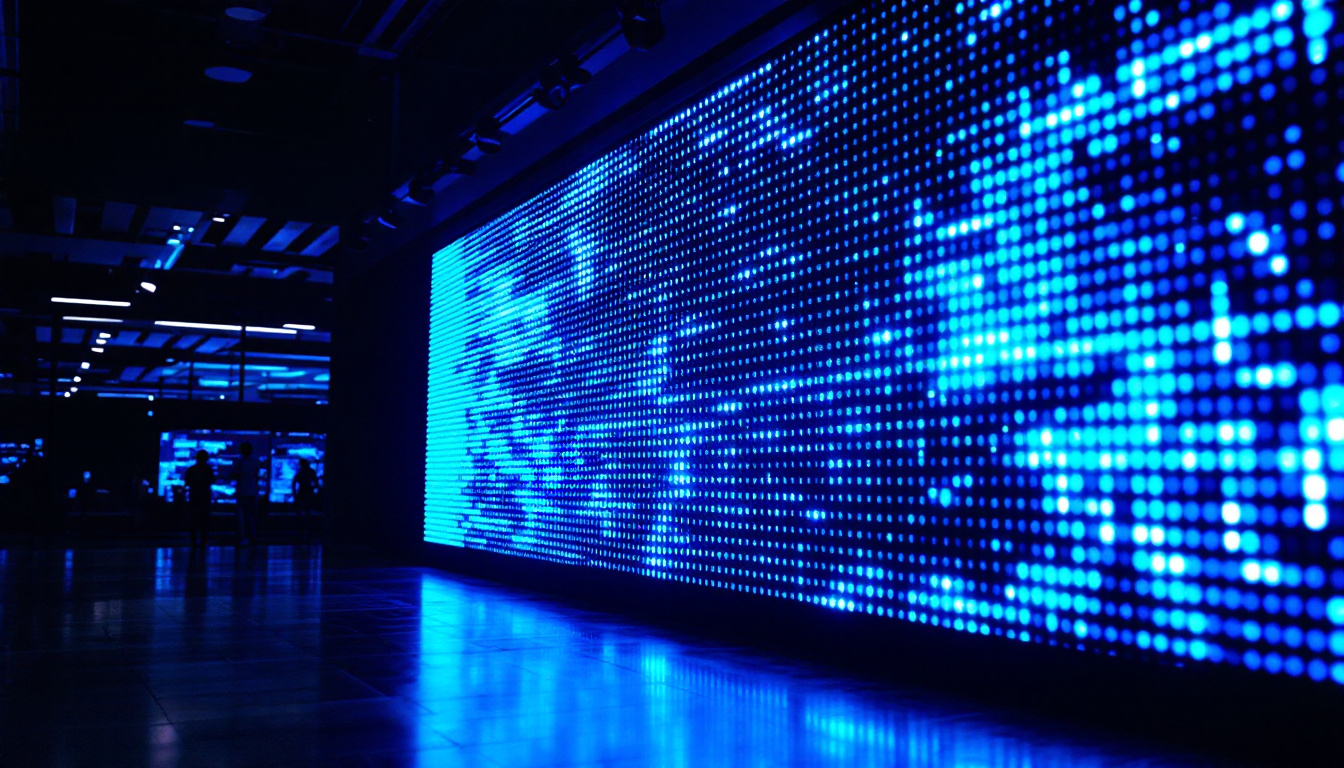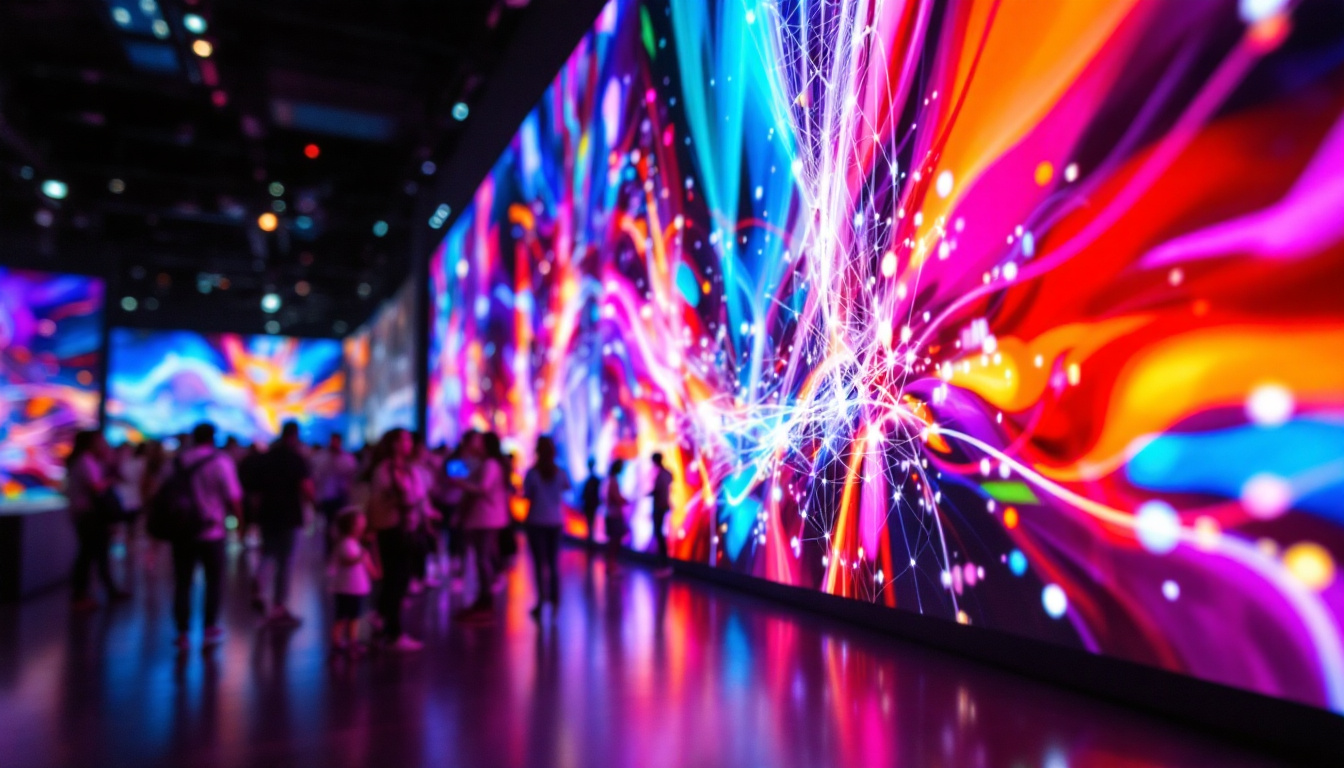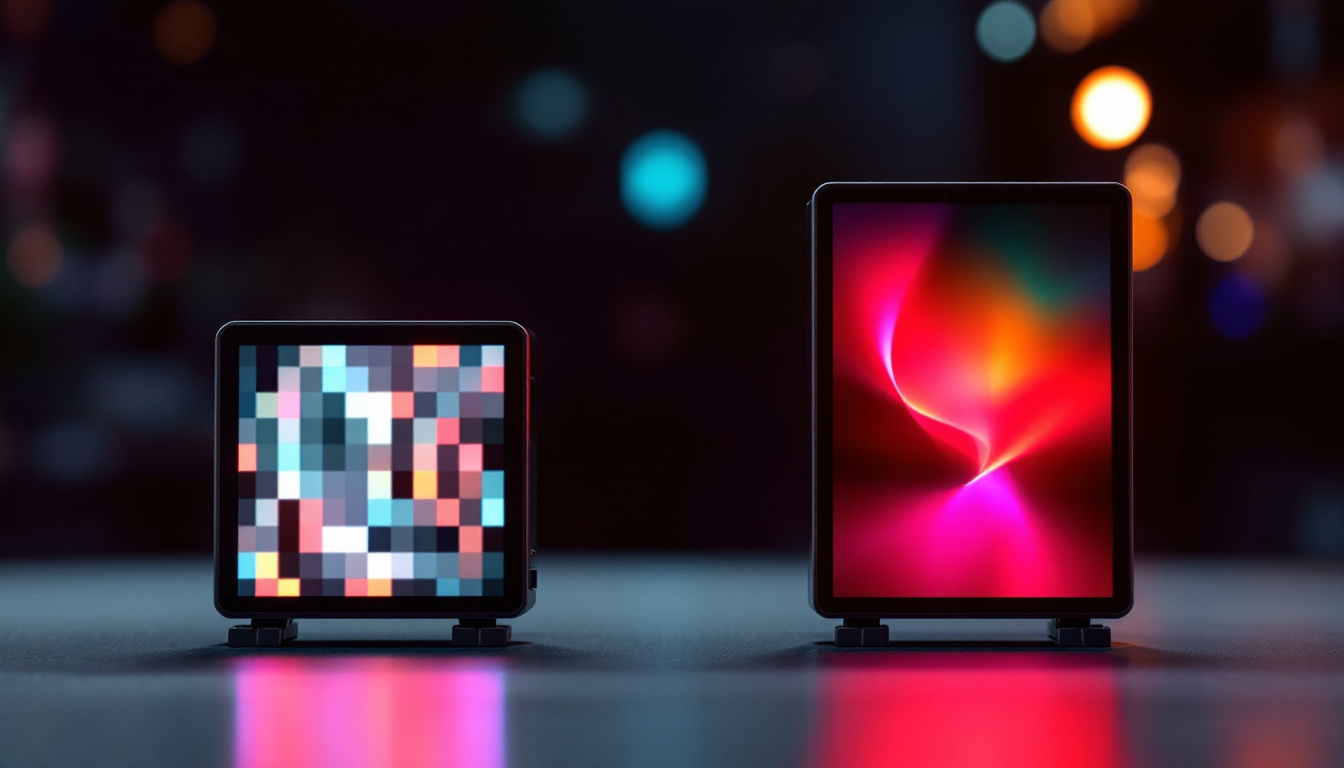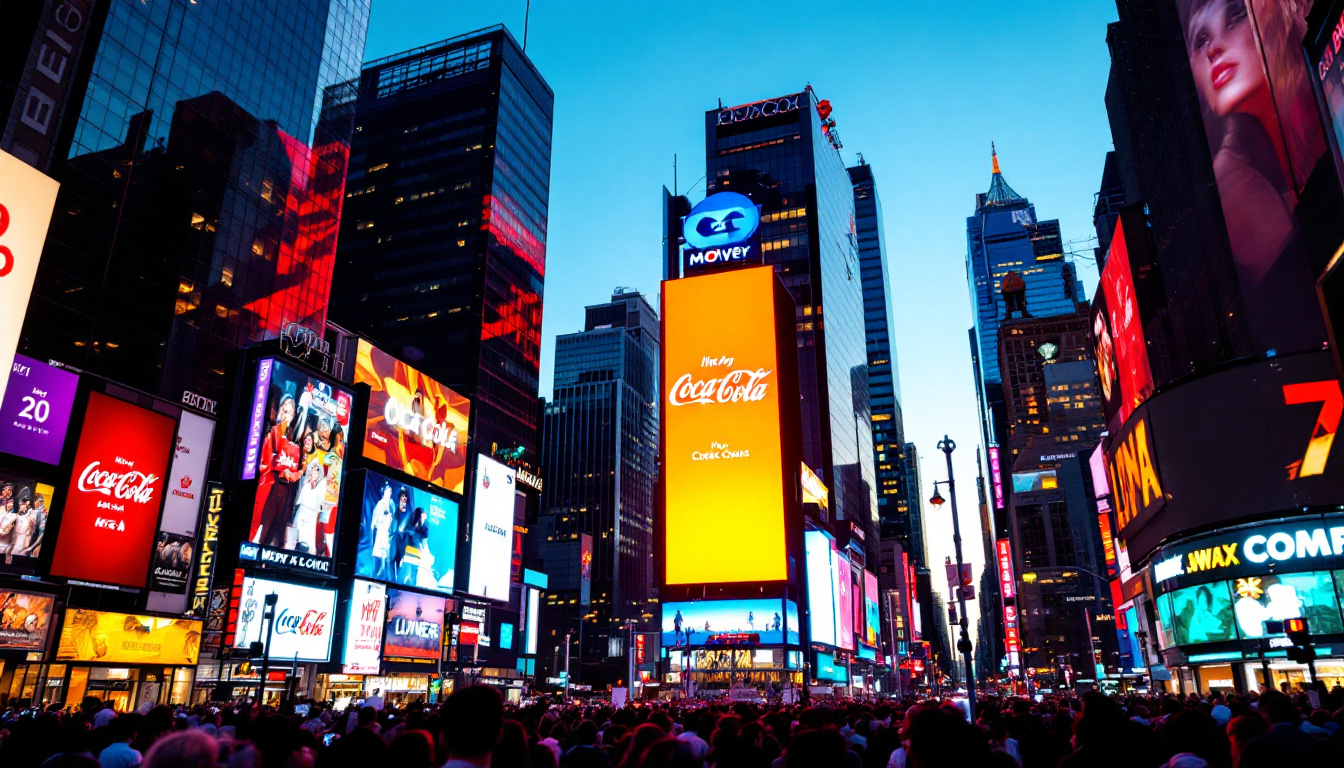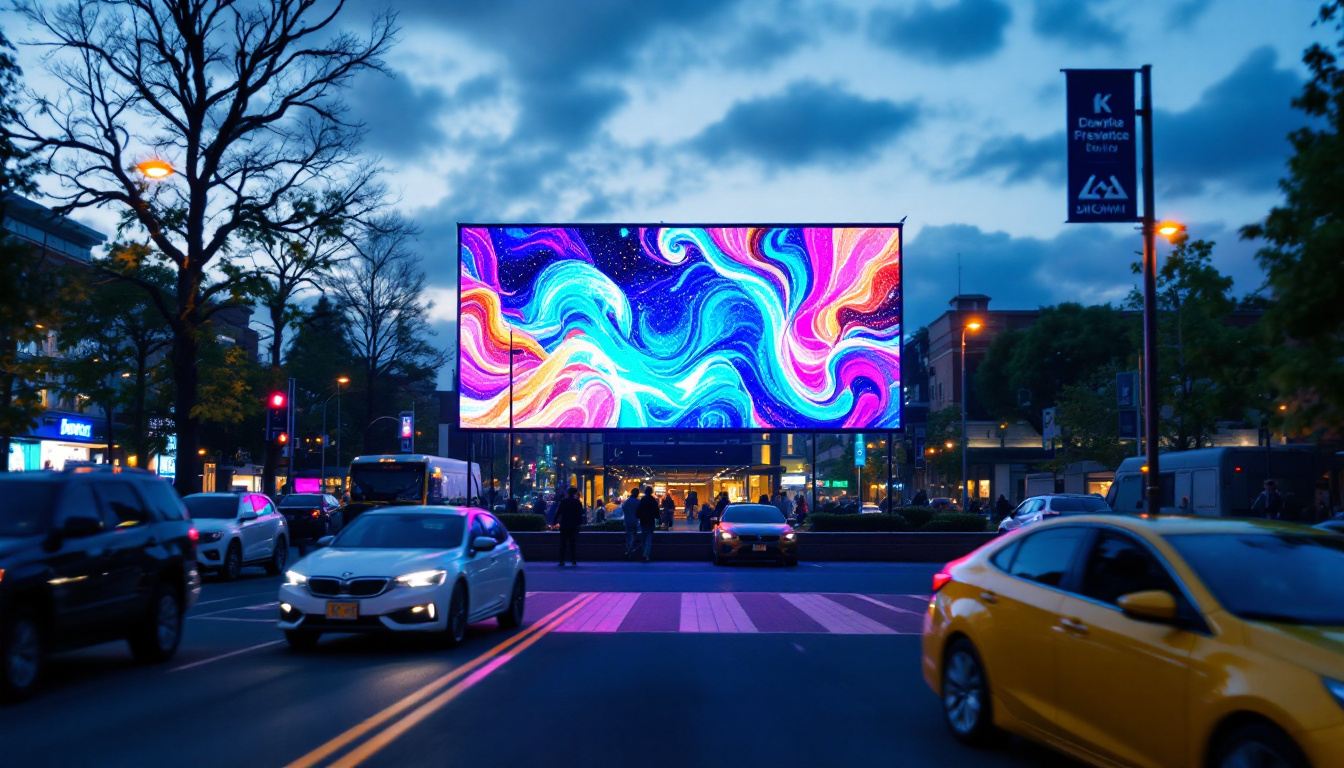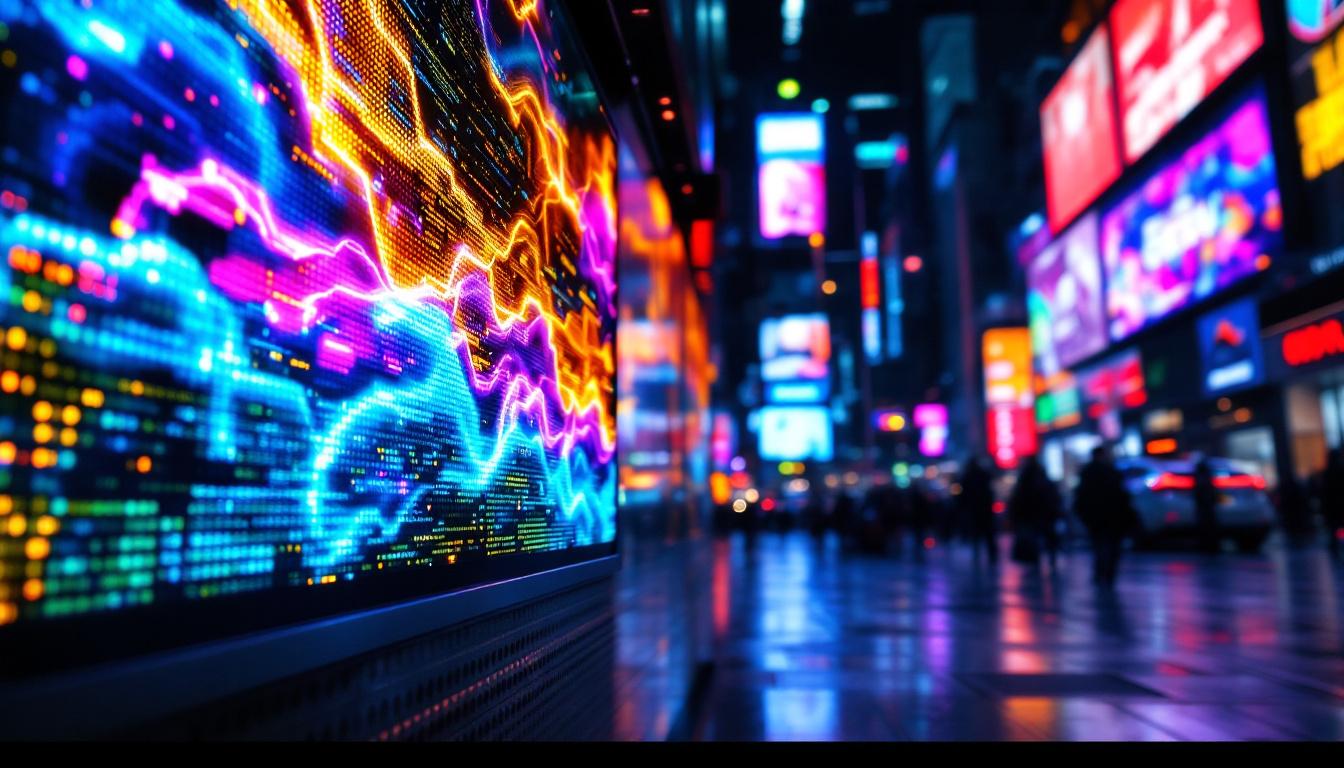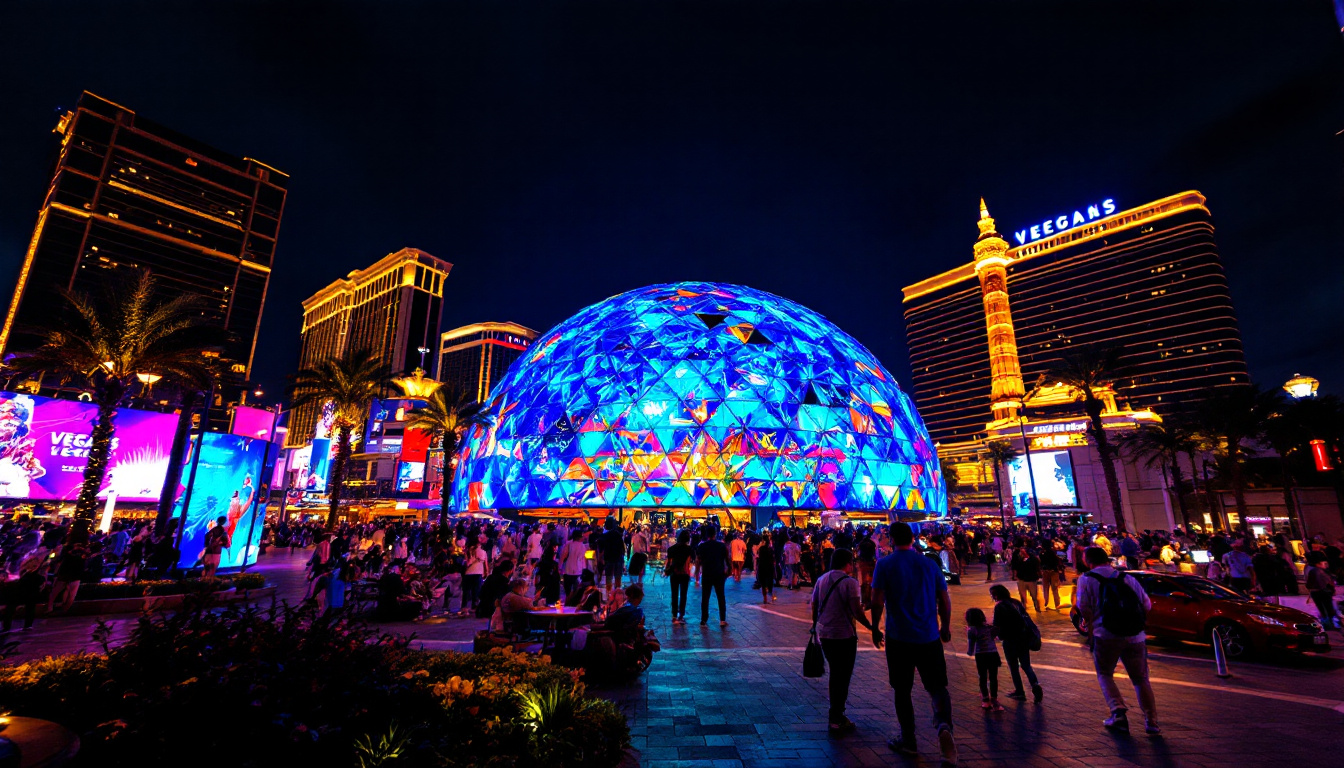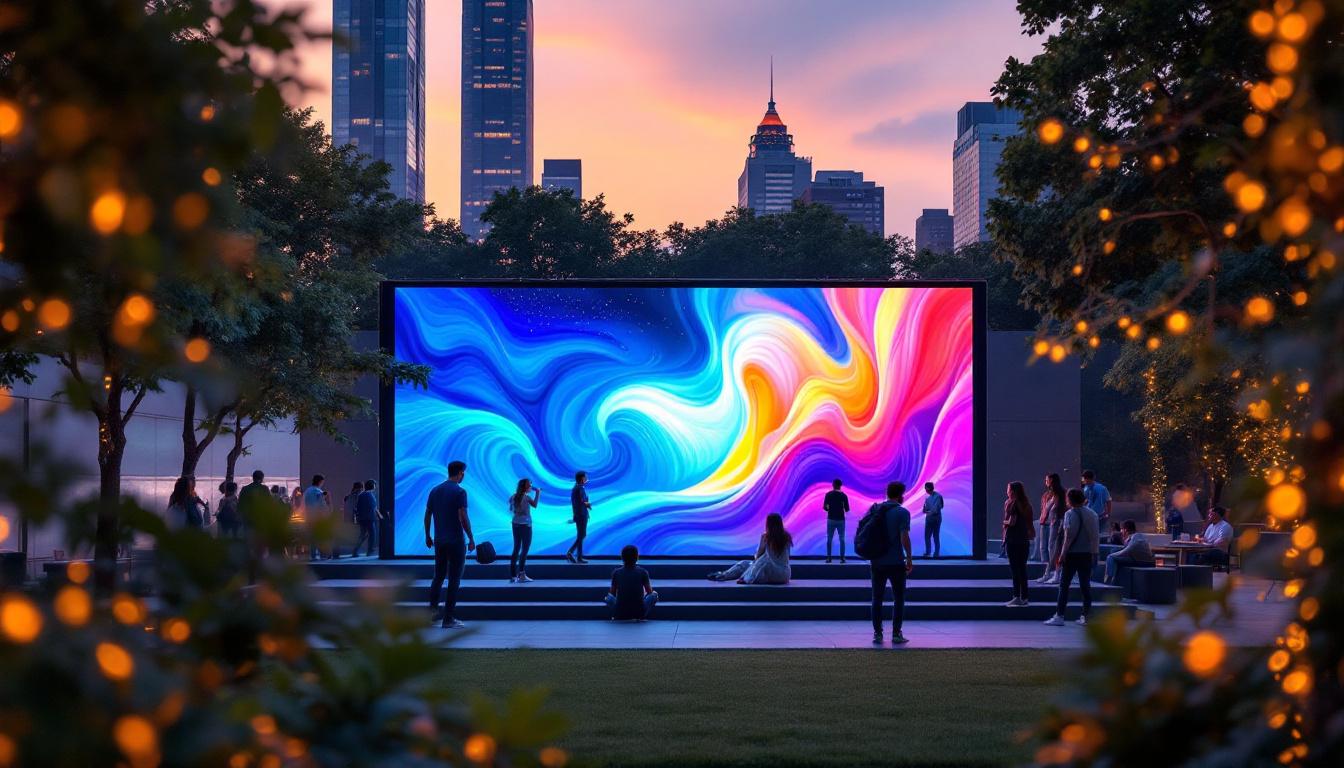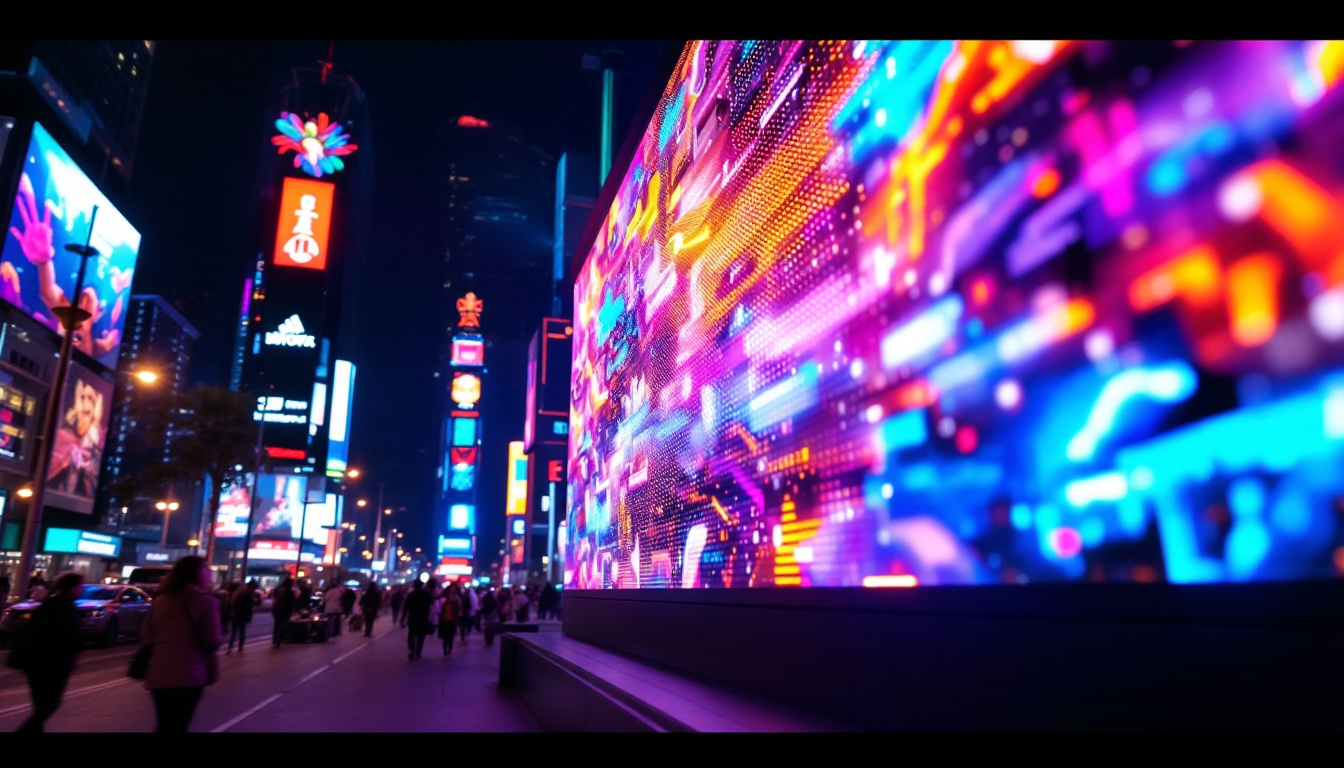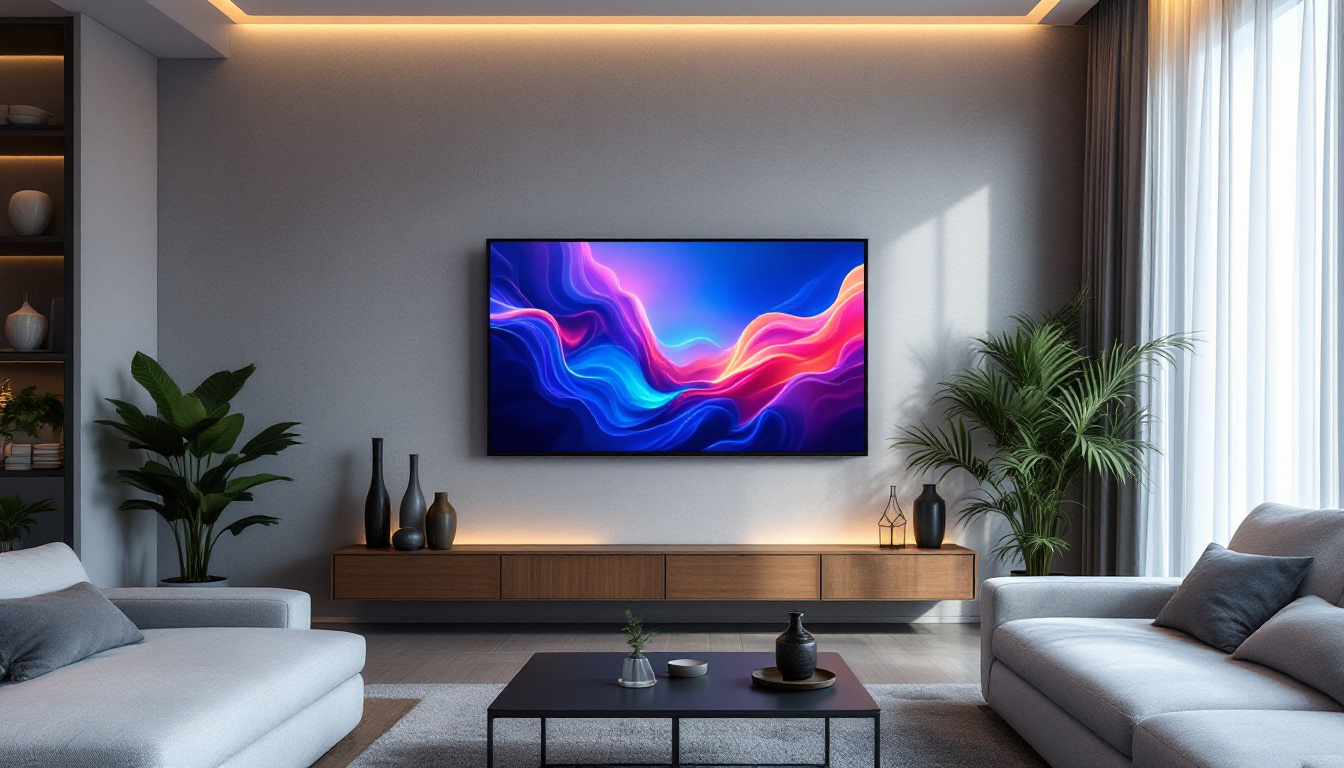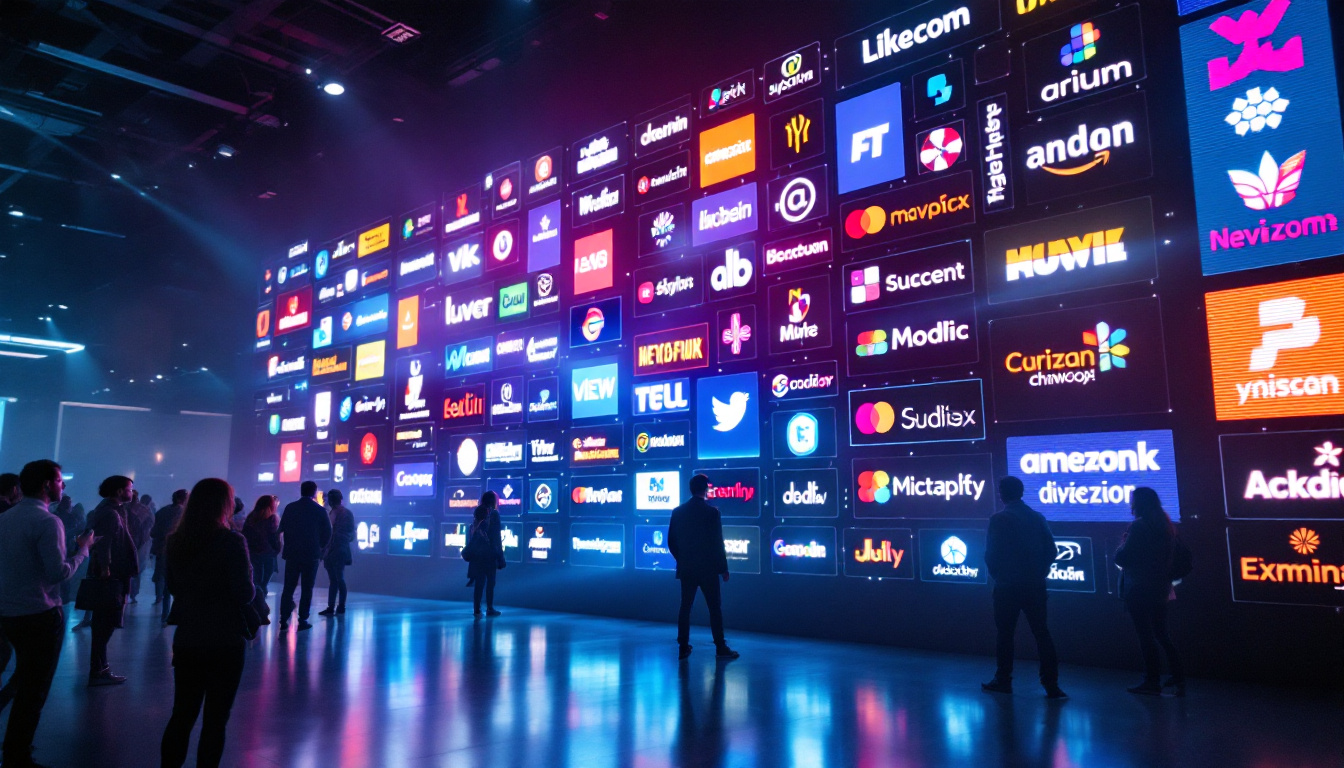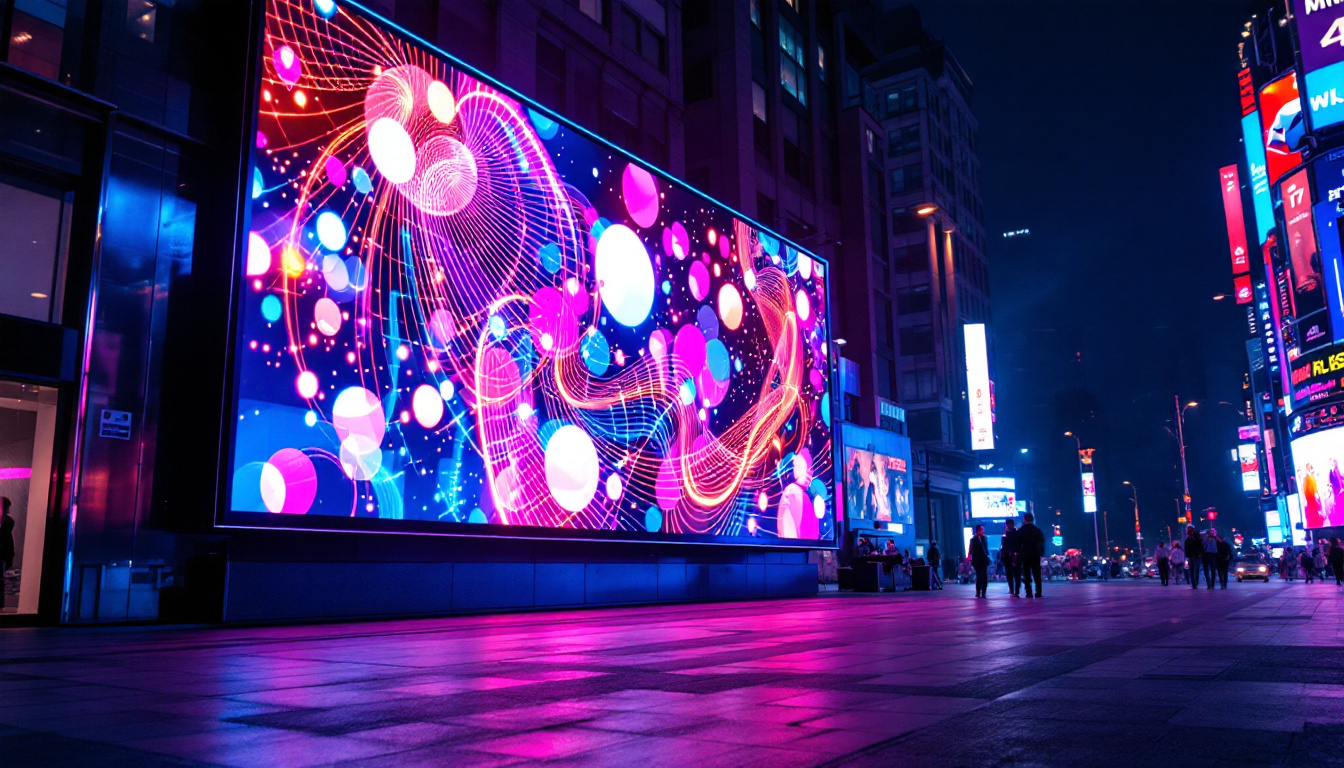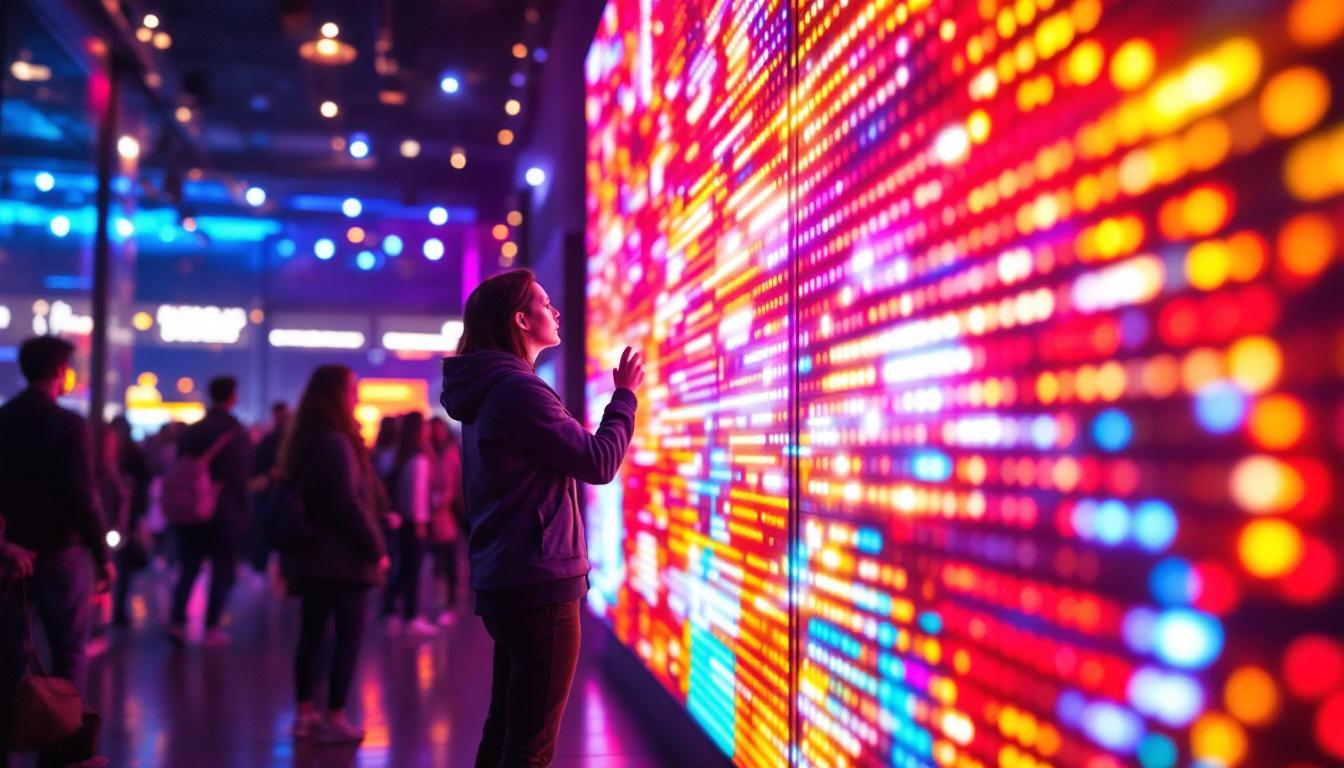In the realm of modern technology, LED displays have emerged as a revolutionary force, transforming the way information is conveyed visually. From advertising billboards to digital signage in retail spaces, these displays have become ubiquitous in our daily lives. This article delves into the intricacies of LED displays, exploring their technology, applications, and advantages.
Understanding LED Technology
Light Emitting Diodes (LEDs) are semiconductor devices that emit light when an electric current passes through them. The basic principle behind LED technology is relatively simple, yet the implications are profound. LEDs are known for their energy efficiency, long lifespan, and versatility, making them ideal for various display applications. Their ability to convert electrical energy directly into light with minimal heat loss is a significant advancement over traditional lighting technologies, leading to lower energy costs and reduced environmental impact.
The Science Behind LEDs
At the core of LED technology lies the concept of electroluminescence. When electrons move through a semiconductor material, they release energy in the form of photons, which is visible light. This process occurs in a solid-state environment, differentiating LEDs from traditional incandescent bulbs that rely on heating a filament to produce light. The efficiency of this process means that LEDs can produce the same amount of light as incandescent bulbs while consuming a fraction of the energy, making them a preferred choice for both consumers and businesses alike.
The materials used in LED production, such as gallium nitride and indium gallium phosphide, play a crucial role in determining the color and brightness of the emitted light. By adjusting the composition of these materials, manufacturers can create LEDs that emit a wide spectrum of colors, from vibrant reds to deep blues. Additionally, advancements in technology have led to the development of white LEDs, which combine different colored diodes or use phosphor coatings to produce a broad spectrum of light, making them suitable for general illumination purposes.
Types of LED Displays
LED displays can be categorized into several types, each designed for specific applications. The most common types include:
- Direct View LED Displays: These displays consist of individual LED modules that form a larger screen. They are commonly used in outdoor advertising and large venues due to their high brightness and visibility. Their modular nature allows for easy scaling and customization, making them a popular choice for concerts, sports events, and public displays.
- LED Backlit Displays: Typically found in televisions and computer monitors, these displays use LEDs as a backlight source to enhance the brightness and contrast of LCD screens. This technology not only improves picture quality but also allows for thinner designs, making modern screens more aesthetically pleasing and space-efficient.
- Organic LED (OLED) Displays: Utilizing organic compounds to emit light, OLED displays offer superior color accuracy and flexibility, making them popular in smartphones and high-end televisions. The ability of OLEDs to produce true blacks and vibrant colors has revolutionized the viewing experience, providing consumers with stunning visuals that were previously unattainable with older technologies.
In addition to these common types, there are also specialized LED displays such as transparent LEDs, which are used in retail environments to create eye-catching advertisements without obstructing views, and flexible LED displays that can be bent or shaped to fit unique designs. The continuous innovation in LED technology not only enhances visual experiences but also opens up new possibilities for creative applications in art, architecture, and entertainment.
Applications of LED Displays
LED displays have found applications across various industries, showcasing their versatility and effectiveness in communication and advertising. From entertainment venues to transportation hubs, the presence of LED technology is undeniable.
Advertising and Marketing
One of the most prominent applications of LED displays is in advertising. Digital billboards and signage allow businesses to capture the attention of potential customers with dynamic content. The ability to change advertisements in real-time ensures that marketing strategies can be adapted quickly, maximizing engagement and effectiveness.
Moreover, LED displays can be programmed to showcase interactive content, enhancing customer experiences. For instance, retailers can use LED screens to display promotional offers or product information, guiding customers through their shopping journey. This interactivity not only captivates the audience but also encourages them to engage with the brand on a deeper level, often leading to increased sales and customer loyalty. Additionally, the use of QR codes and social media integration on these displays allows businesses to bridge the gap between physical and digital marketing, creating a seamless experience for consumers.
Entertainment and Events
In the entertainment industry, LED displays have revolutionized the way audiences experience events. Concerts, sports games, and festivals often feature large LED screens that provide visual enhancements, displaying live feeds, graphics, and special effects. These displays create an immersive atmosphere, allowing audiences to engage more deeply with the performance.
Furthermore, the flexibility of LED technology enables event organizers to create customized displays tailored to specific themes or branding, enhancing the overall aesthetic appeal of the event. For example, during a music festival, LED screens can be synchronized with the rhythm of the music, creating a captivating visual spectacle that elevates the overall experience. Additionally, the portability and modular nature of LED panels allow for innovative stage designs, transforming ordinary venues into extraordinary spaces that leave a lasting impression on attendees.
Transportation and Public Spaces
LED displays are increasingly being used in transportation systems, providing real-time information to commuters. Train stations, airports, and bus terminals utilize LED screens to display arrival and departure times, helping passengers navigate their journeys with ease.
In public spaces, LED displays serve as information hubs, showcasing news, weather updates, and community announcements. Their high visibility ensures that critical information reaches a wide audience, contributing to informed public engagement. Moreover, the energy efficiency and longevity of LED technology make it a sustainable choice for cities looking to reduce their environmental footprint. Cities are also exploring the use of LED displays for artistic installations in public parks and squares, transforming urban landscapes into vibrant canvases that celebrate local culture and creativity. This not only beautifies the environment but also fosters community interaction and pride, making public spaces more inviting for residents and visitors alike.
Advantages of LED Displays
The growing popularity of LED displays can be attributed to their numerous advantages over traditional display technologies. Understanding these benefits can help businesses and organizations make informed decisions regarding their visual communication strategies.
Energy Efficiency
One of the standout features of LED displays is their energy efficiency. Compared to traditional incandescent or fluorescent displays, LEDs consume significantly less power, resulting in lower energy bills and a reduced carbon footprint. This efficiency is particularly beneficial for large-scale installations, where energy costs can be substantial.
Longevity and Durability
LED displays are built to last. With a lifespan often exceeding 50,000 hours, they require less frequent replacements compared to traditional display technologies. This longevity not only reduces maintenance costs but also minimizes waste, making LED displays a more sustainable choice.
Additionally, LEDs are more resistant to shock and vibration, making them suitable for outdoor environments and high-traffic areas. Their durability ensures that they can withstand various weather conditions, further extending their operational lifespan.
High Brightness and Visibility
LED displays are known for their exceptional brightness, making them easily visible even in direct sunlight. This high visibility is crucial for outdoor advertising and public displays, ensuring that messages are conveyed effectively regardless of environmental conditions.
The ability to produce vibrant colors and high contrast ratios enhances the overall visual experience, capturing the attention of viewers and improving engagement. This quality makes LED displays a preferred choice for businesses looking to make a lasting impression.
Challenges and Considerations
While LED displays offer numerous advantages, there are also challenges and considerations that potential users should be aware of. Understanding these factors can help in making informed decisions regarding the implementation of LED technology.
Initial Cost
The initial investment for LED displays can be higher than that of traditional display technologies. However, it is essential to consider the long-term savings associated with energy efficiency and reduced maintenance costs. Businesses should conduct a cost-benefit analysis to determine the overall value of investing in LED technology.
Technical Expertise
Installing and maintaining LED displays requires a certain level of technical expertise. Organizations may need to invest in training for their staff or hire specialized professionals to ensure proper setup and maintenance. This consideration is crucial to maximizing the lifespan and performance of the displays.
Content Management
Effective content management is vital for maximizing the impact of LED displays. Organizations must develop strategies for creating and updating content regularly to keep audiences engaged. This may involve investing in content management software or hiring skilled personnel to oversee digital marketing efforts.
The Future of LED Displays
The future of LED displays looks promising, with ongoing advancements in technology and design. As industries continue to explore innovative applications, LED displays are expected to play an increasingly vital role in communication and advertising.
Emerging Technologies
Recent developments in LED technology, such as MicroLED and MiniLED, are pushing the boundaries of display capabilities. These technologies offer improved resolution, color accuracy, and energy efficiency, paving the way for even more immersive visual experiences.
Furthermore, the integration of artificial intelligence and machine learning into content management systems is expected to enhance the effectiveness of LED displays. By analyzing viewer behavior and preferences, organizations can tailor content to maximize engagement and impact.
Sustainability Initiatives
As sustainability becomes a focal point for businesses and consumers alike, LED displays are well-positioned to contribute to eco-friendly initiatives. The energy efficiency and longevity of LEDs align with the growing demand for sustainable practices, making them an attractive choice for organizations looking to reduce their environmental impact.
Conclusion
LED displays have revolutionized the way information is presented and consumed in various industries. Their energy efficiency, durability, and high visibility make them a preferred choice for businesses seeking to enhance their communication strategies. While challenges exist, the benefits of LED technology far outweigh the drawbacks, making it a worthwhile investment for the future.
As technology continues to evolve, the potential applications and capabilities of LED displays will only expand, shaping the way audiences interact with visual content. Embracing this technology can lead to innovative solutions that engage and inform, ultimately driving success in an increasingly competitive landscape.
Discover LumenMatrix’s Innovative LED Solutions
Ready to elevate your visual communication strategy with cutting-edge LED technology? Explore LumenMatrix’s comprehensive range of LED display solutions, designed to captivate your audience and amplify your brand’s message. From Indoor and Outdoor LED Wall Displays to specialized options like Vehicle, Sports, and Floor LED Displays, LumenMatrix offers custom and all-in-one solutions to fit any need. Experience the transformative power of LED displays and join the revolution in digital signage. Check out LumenMatrix LED Display Solutions today and see your vision come to life.

